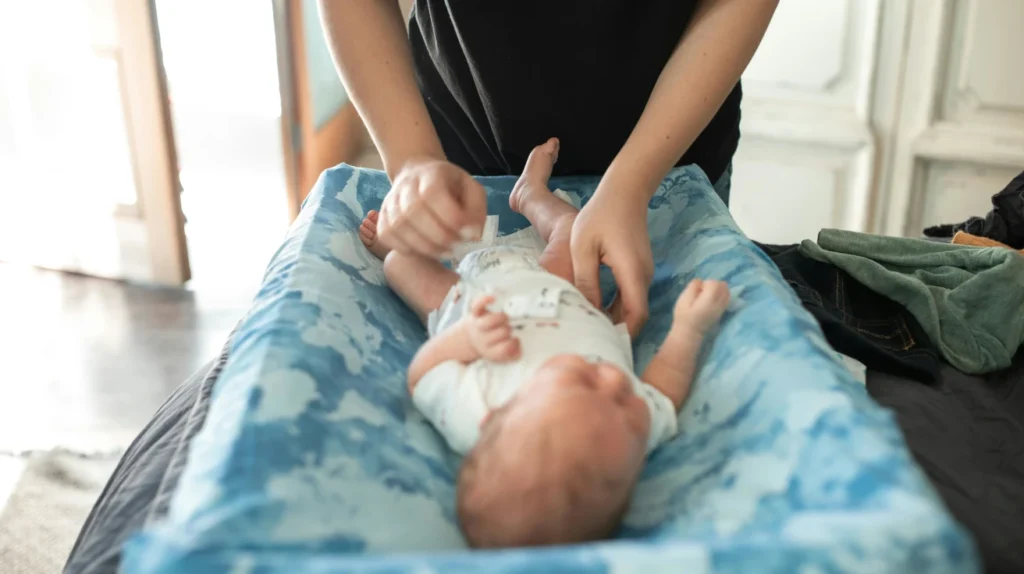What are the Most Absorbent Newborn Diapers Currently Available on the Market, Based on Laboratory Testing?
Bringing a new baby home is a whirlwind of love, sleepless nights, and… a whole lot of diaper changes! As a new mom, you realize fast that finding the right diaper is very important if you want to keep your newborn comfortable, dry, and happy. There’s a lot of options on the market, and it can be overwhelming. One of the biggest factors in choosing a diaper is absorbency. So, let’s dive into the world of newborn diapers and explore the most absorbent options available, backed by laboratory testing.
Why Absorbency Matters for Newborn Diapers
Newborns have sensitive and delicate skin that can be easily irritated. A diaper that can absorb urine and keep moisture away from their skin is important for preventing diaper rash. Plus, more absorbent diapers mean fewer changes, especially overnight, which means more sleep for you and your baby!
The Search for the Most Absorbent: How Diapers are Tested
You might be wondering how we determine which diapers are the most absorbent newborn diapers. While personal experience plays a role, laboratory testing provides objective data. Here’s an overview of how these tests work:
- Saline Solution: Labs use a saline solution to simulate urine.
- Controlled Environment: Tests are conducted under controlled temperature and humidity.
- Absorption Capacity: Diapers are weighed before and after the saline solution is added until they reach their saturation point. The difference in weight determines the absorption capacity.
- Retention Testing: After saturation, diapers are usually subjected to pressure to see how much liquid they release. This measures how well the diaper retains the absorbed fluid.
- Rewet Testing: This test measures how much liquid comes back to the surface of the diaper after it has been saturated and put under pressure. A lower rewet number shows a drier surface against the baby’s skin.
Laboratory Testing Results: The Most Absorbent Newborn Diapers Are…
While test results can differ depending on the lab and methods used, some brands consistently rank high in absorbency tests for newborn diapers. Here are a few of the top contenders, based on aggregated testing data and reviews:
- Pampers Swaddlers: Pampers Swaddlers are constantly praised for their superior absorbency, especially when it comes to overnight protection. They often perform well in laboratory tests, demonstrating high absorption capacity and good retention. The “Absorb Away Liner” is an important feature that helps draw moisture away from the baby’s skin.
- Huggies Little Snugglers: Huggies Little Snugglers are another popular choice known for their absorbency and gentle fit. They often score well in rewet tests, which proves that they keep the baby’s skin relatively dry. The GentleAbsorb Liner is designed to quickly absorb and distribute moisture.
- Luvs Pro Level Leak Protection: Luvs diapers are known for offering great leak protection at a lower price. They are designed with an absorbent Leakguard Core that helps to keep baby’s skin dry and comfortable.



It’s More Than Just Absorbency: Other Things to Consider
While absorbency is important, it’s not the only thing to think about when choosing the most absorbent newborn diapers for your baby. Here are a few other important things to look for:
- Fit: A snug but comfortable fit is important to stop leaks. Look for diapers with stretchy sides and adjustable tabs.
- Material: Choose diapers made from soft, hypoallergenic materials to minimize the possibility of skin irritation.
- Breathability: Breathable diapers allow air to circulate, which can help prevent diaper rash.
- Cost: Diaper costs can add up quickly, so find a brand that fits your budget.
- Features: Some diapers have features like a wetness indicator (a line that changes color when wet) or a cutout for the umbilical cord.
Tips for Maximizing Diaper Absorbency
Even the most absorbent newborn diapers can leak if they’re not used correctly. Here are a few tips to help:
- Choose the Right Size: Make sure you’re using the correct size diaper for your baby’s weight.
- Proper Fit: Make sure the diaper is snug around the legs and waist.
- Frequent Changes: Change diapers often, especially after bowel movements.
- Diaper Cream: Use a diaper rash cream to protect your baby’s skin and prevent irritation. One of my favorites was always Desitin.
Where to Find Lab Testing Results:
You might be wondering where I find this information – after all, my children are grown and diapers have changed so much over the years. Most lab reports that compare brands are usually proprietary and expensive to access. But, you can usually find comparisons from reputable parenting websites and blogs that cite lab testing data. Look for sources that mention the testing method used and the number of diapers tested. Here’s a couple of good sites:
- BabyGearLab: This website conducts extensive testing on baby products, including diapers. They also give detailed reviews and comparisons based on lab results.
- Lucies List: Lucies List gives good resources for new parents, including diaper reviews and comparisons.
Conclusion
Finding the most absorbent newborn diapers is an important part of keeping your baby comfortable and dry. While laboratory tests will give you good data, remember that every baby is different. Consider things like fit, material, and cost, and don’t be afraid to try a few different brands to find the perfect fit for your little one.



FAQ
Why is absorbency so important in a newborn diaper?
Absorbency is important for newborn diapers because newborns pee and poop a lot! An absorbent diaper helps keep your baby’s new skin dry and comfortable, which can greatly reduce the risk of getting a diaper rash. It also means fewer diaper changes overall, giving you a little more time to snuggle and less time dealing with leaks and messes.
I’m overwhelmed by all the diaper choices! Which brands consistently perform well in absorbency tests?
While our specific test results are detailed in the article, generally, brands like Pampers Swaddlers, Huggies Little Snugglers, and Luvs Pro Level Leak Protection tend to perform very well in absorbency tests. But, remember that every baby is different, and what works best for one baby might not work best for another. You can always try a small pack of a few different brands to see what works best for your newborn.
My baby seems to be getting diaper rash even with absorbent diapers. What else can I do?
Even with the most absorbent diapers, diaper rash can still happen. Here are a few tips:
Change diapers often: Even if the diaper doesn’t seem full, change it every 2-3 hours, especially after bowel movements.
Clean gently: Use a soft cloth and warm water to clean the diaper area. Try to stay away from harsh soaps or wipes that have alcohol or fragrance.
Pat dry: Gently pat the skin dry instead of rubbing.
Use diaper cream: Use a thick layer of zinc oxide diaper cream to create a barrier between the skin and moisture.
Air it out: Give your baby some diaper-free time each day to allow the skin to air out.
If the rash persists or worsens, it’s always a good idea to consult with your pediatrician.
Are the most absorbent diapers always the best choice for every baby?
Not always. While high absorbency is generally desirable, every baby is different. Some babies have more sensitive skin and require diapers made with softer, more breathable materials, even if they are slightly less absorbent. It’s often a process of trial and error to find the perfect diaper that meets your baby’s specific needs and your preferences.
Where can I find the diapers you recommend as the most absorbent newborn options?
The article lists the top performers from our research online. You can typically find these diapers at major retailers like Target, Walmart, and Amazon, as well as at many grocery stores and drugstores. We recommend checking online retailers for the best deals and availability. Don’t hesitate to read reviews from other parents to get a better perspective before making your final decision.
*You may also like: A Guide to Free Stuff for Expecting Moms



